Do you ever want to get away from it all? Maybe find someplace unspoiled to just kick back and relax? In this article, we introduce you to the smallest countries in the world by population. Some of them are the tropical paradises and small towns of your dreams. But as you’ll see, some of the smallest countries in the world are also the most crowded, urban, or exploited. However, we can make the case that all these countries are worth visiting. Grab your passport and get ready to be surprised by the smallest countries in the world by population!
1. Vatican City, Population 510
Vatican City is the smallest country in the world both by size (109 acres) and population (510). Of course, many thousands of people visit and work there every day. But the permanent residents of the Vatican number only a few hundred. The whole country is surrounded by a wall and is located inside the city of Rome, Italy. Even though it’s so tiny, Vatican City has global influence as the center of the Roman Catholic Church. This famous country is also the residence of the Pope. World leaders and the Catholic faithful flock here from all over the world. Some attempt to convince the church to use its influence for political causes or spiritual blessings.
But it’s not only Catholics who visit the Vatican. Tourists of any religious or non-religious background appreciate the Vatican’s iconic architecture. It is also known for its sculptures and murals, such as St. Peter’s Basilica and the Sistine Chapel. The Vatican museums and archives have art, artifacts, and historical documents of worldwide significance. It’s no surprise that the Vatican is a UNESCO world heritage site. The Vatican conducts most of its day-to-day business in Italian, but for official and ceremonial events, Latin is sometimes used. Walking around, though, you’ll likely hear people speaking every language under the sun, even your own.
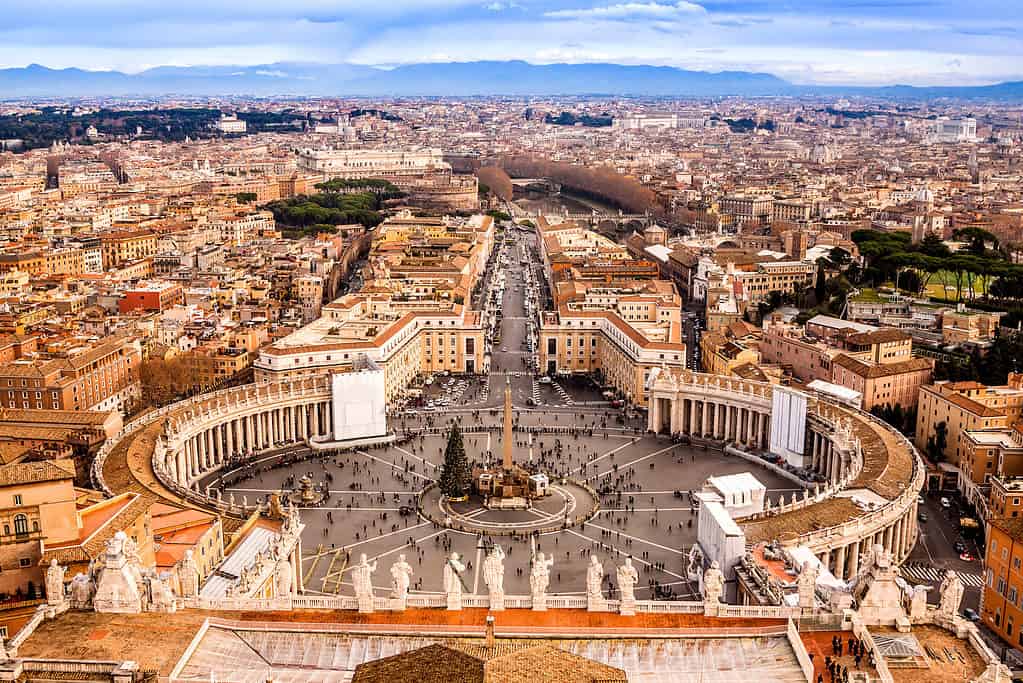
Vatican City is an independent country located entirely inside the city of Rome.
©Sergii Figurnyi/Shutterstock.com
2. Tuvalu, Population 11,312
Tuvalu is a Pacific Ocean island country made up of nine coral islands with a population of about 11,312. The country is about half the distance between Hawaii and Australia. From its position near the center of the vast ocean, Tuvalu is one of the most remote countries on Earth. The total land area of the country is only about 10 square miles. And most of it is just a little above sea level. Obviously, global warming and rising sea levels are an enormous concern for Tuvalu.
Another problem is that the country doesn’t have much soil to raise its own crops. Of course, seafood is abundant. But for a more well-rounded diet, the country has to import food from abroad, which is hugely expensive. Most of the income for the country today comes from leasing out fishing rights to international companies.
Like most Pacific countries, Tuvalu was colonized by Europeans. The first ones to visit were the Spanish in 1568. By the 19th century, though, the British Empire had pulled far ahead of all its rivals and taken over Tuvalu as a colony. They ruled it until it won independence in 1978, but even after independence, Tuvalu recognizes the British monarch as the figurehead of State, without any real power. English became the second language in Tuvalu as a result of colonialism, but the country has been able still to preserve its own language, family, and community values, traditional dances, music, and skills like weaving and carving. Being small and off the beaten path does have its advantages.
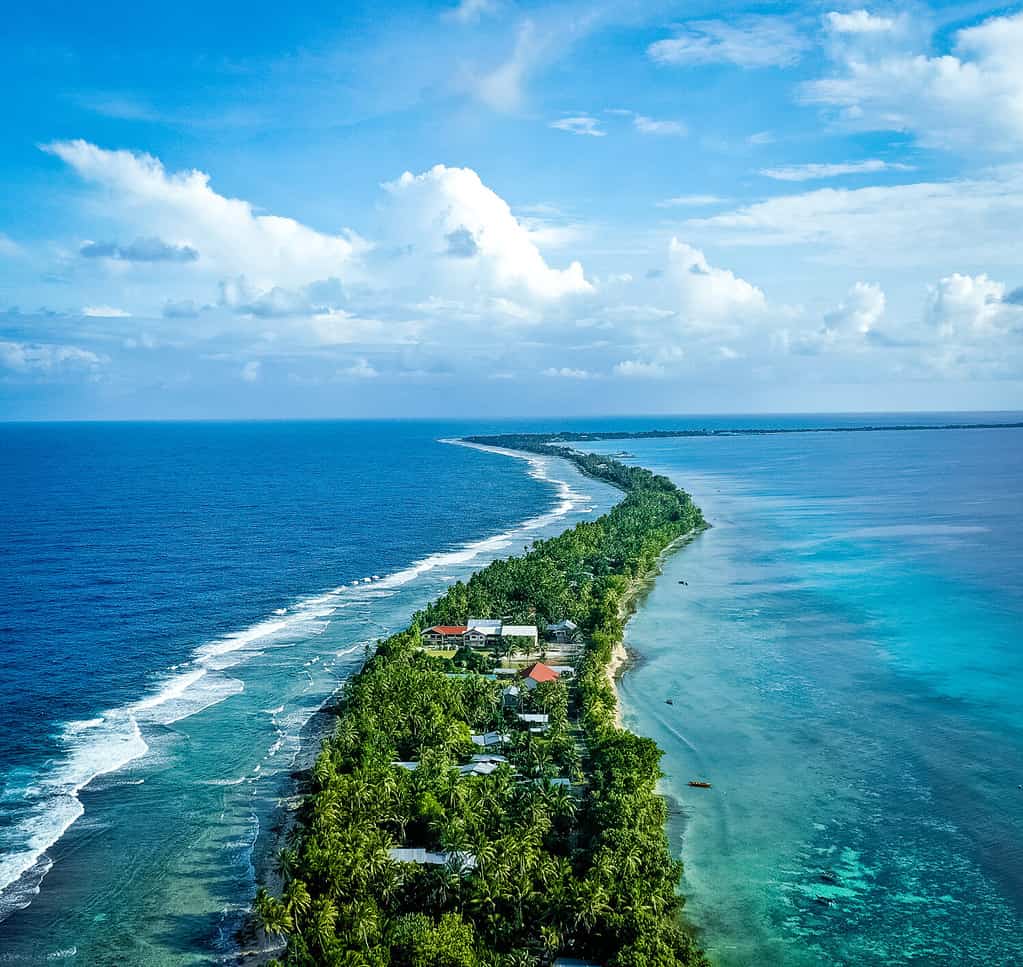
Some of the islands of Tuvalu are quite narrow. What would it be like to live on this island during a storm?
©Romaine W/Shutterstock.com
3. Nauru, Population 12,688
Nauru, like Tuvalu, is a remote Pacific Island nation. All 12,688 people in the country live on just one island. Interestingly, Nauru is the least-visited country on Earth. Other than its own population, there are only about 15,000 people on the planet who have ever been there. One of those people was Queen Elizabeth II, who included this island on one of her official tours through the Pacific.
Isolation didn’t spare Nauru from the notice of colonial empires. It changed hands a surprising number of times. Germany claimed Nauru, but their empire didn’t last long. Germany was defeated in World War I and the victorious allies stripped them of all their colonies. Nauru was placed under Japanese authority. After Japan was defeated, Nauru was put under the control of the U.K., Australia, and New Zealand. That’s a lot of countries to watch over one tiny island!
There’s a good reason that so many countries were interested in little Nauru. This island was sitting on top of a massive deposit of phosphate, a valuable element used by many kinds of industries. In Nauru, this rich deposit was located close to the surface, making it convenient to mine. The phosphate lasted for about 100 years before it finally gave out in the 1990s. As a result, the island’s economy collapsed and most of the population became unemployed.
Nauru Today
Though Nauru was able to get its independence in 1968, today, it is pretty dependent on assistance from Australia. For its part, Australia has gotten value from the relationship in a controversial way, by using Nauru as an offshore immigrant detention facility. There has been some talk over the years of relocating the entire island’s population to a better island someplace in the Pacific. But so far, this hasn’t happened.
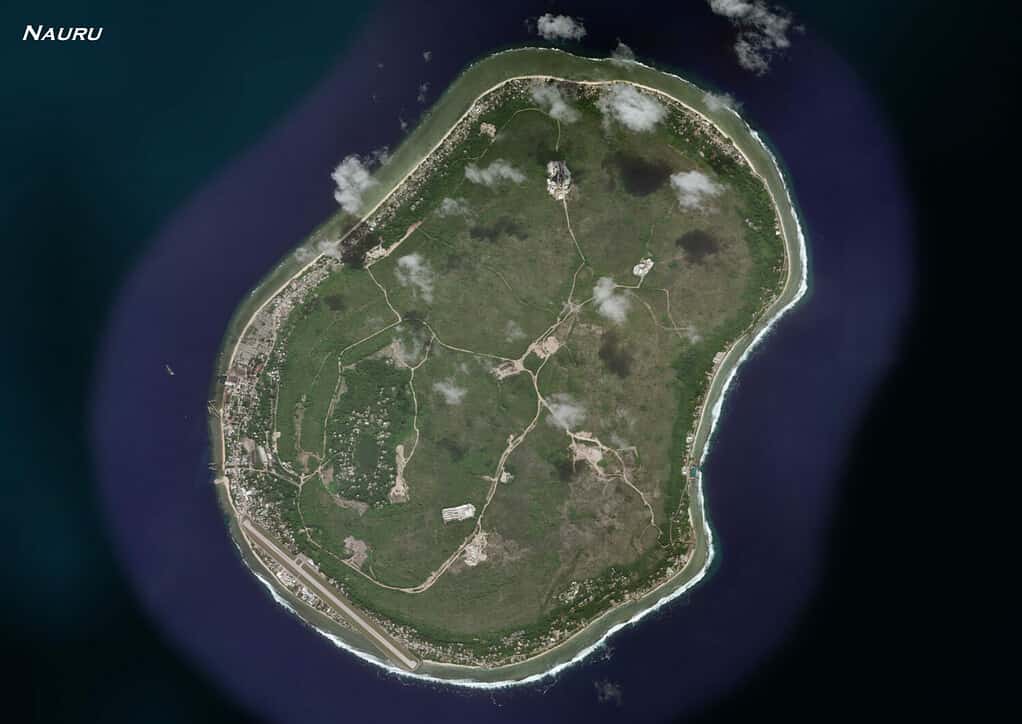
The whole country of Nauru consists of one island that has been so heavily damaged, there’s talk of relocating all the citizens to a different island.
©yutthana-landscape/Shutterstock.com
4. Cook Islands, Population 15,040
The Cook Islands is an island country in the South Pacific Ocean with 15 islands and a total land area of 93 square miles. Even though their land area is small, it gives them an Exclusive Economic Zone of 756,771 square miles of ocean! The Cook Islands have a free association agreement with New Zealand and many of their residents hold dual citizenship. The broader Cook Islander population is also much bigger than it first appears because there are over 80,000 people in New Zealand and 28,000 in Australia who assert their Cook Islander heritage. The islands were named after British sea captain James Cook, who explored the islands in the late 18th century. The Cook Islands are a popular destination for tourists, with nearly 170,000 a year visiting. Some of the other mainstays of their economy are offshore banking, pearl harvesting, and exports of fruit and seafood.

It’s easy to see why the Cook Islands are a popular vacation destination!
©Martin Valigursky/Shutterstock.com
5. Palau, Population 18,055
Palau, another Pacific Ocean nation, has 18,055 people who can spread out over about 340 islands covering about 180 square miles. It has maritime boundaries with Indonesia and the Philippines. Many people speak English there, but the main language is Palauan, which is related to some of the languages of the Philippines, Indonesia, and Malaysia. Palau’s economy is built on farming, tourism, and fishing. These islands have a lot of unique marine life that has been well-conserved for generations because of island customs related to stewardship of the environment.
In the colonial era, these islands changed hands many times. First of all, Spain colonized them, but after losing a war and a good many of its colonies to the United States, it sold these remaining islands to Germany to recoup some of its war expenses. After Germany was on the losing side of World War I, it was stripped of its overseas colonies, and the newly formed League of Nations decided which countries would administer them until they could become independent. Japan was put in charge of Palau.
A few decades later Japan was defeated in World War II. The League of Nations was replaced with the United Nations, and Palau and other Pacific Islands were turned over to the United States in a big Trust Territory. Palau and several other countries have now become independent from that territorial status, but still have really close relationships with the United States. For example, the U.S. handles their overseas defense and provides some social services to the population, and they use the American dollar as their currency.
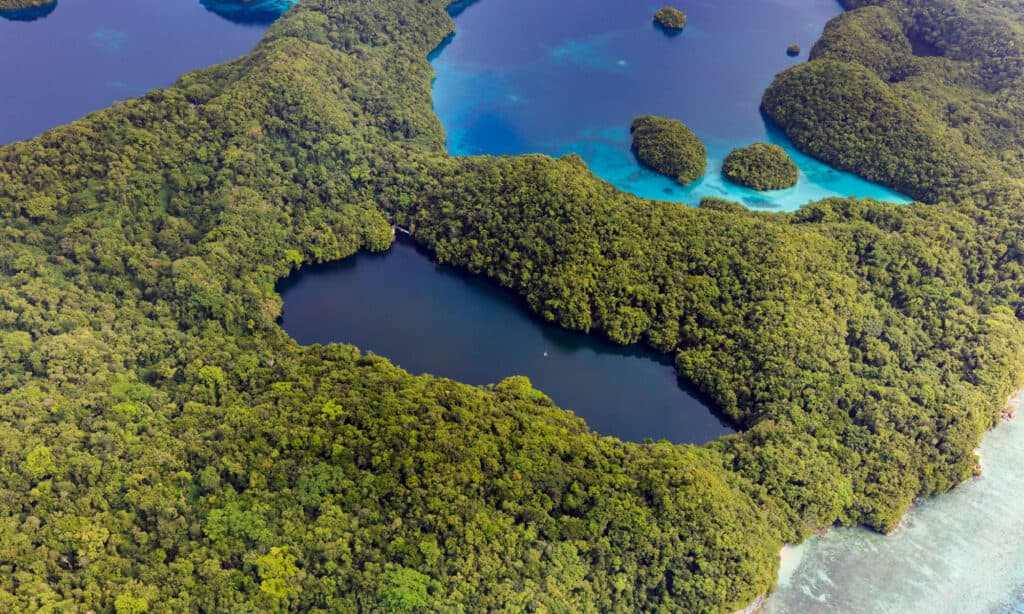
One of Palau’s greatest resources is its rich and diverse marine life.
©iStock.com/Norimoto
6. San Marino, Population 33,660
San Marino, like Vatican City, is a small independent country located entirely inside of Italy. About 33,660 people call it home. When Italy was unifying in the 1800s, many people who were opposed to unification fled to San Marino, which was in a hilly location and more easily defensible from attack. Rather than trying to force them into the country, Italy solved the problem by signing a treaty with them in 1862 that allowed them to stay independent. Amazingly, San Marino was able to stay independent and neutral during World War II, with one exception: retreating Axis troops decided to go through San Marino and were pursued by Allied troops, who stayed for a few weeks and then left.
Today, the architecture of San Marino is one of its most attractive features for tourists. The medieval historic downtown area of the capital is a UNESCO World Heritage Site. San Marino has some traditional festivals that have been handed down for hundreds of years, like the Feast of San Marino and the Palio dei Castelli. People in San Marino have also preserved some traditional skills such as ceramics, embroidery, and woodcarving. The country today is well-developed and has a high standard of living.
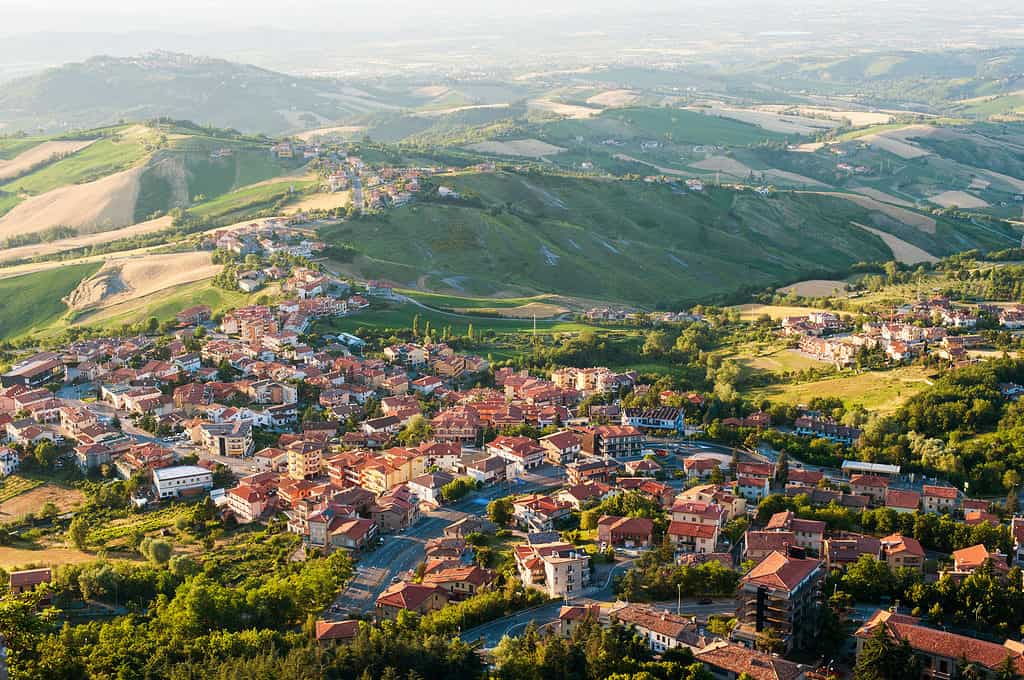
San Marino is a modern and well-developed country, surrounded by Italy and sharing the Italian language and culture.
©iStock.com/taratata
7. Monaco, Population 36,469
Monaco is a world-famous city-state on the French Riviera. It is one of the world’s smallest countries by population (with only 36,469 citizens). However, it is also the most densely populated country in the world. Residents are crammed into just 499 acres of land! On top of that, this micro-country gets nearly 160,000 foreign visitors a year! So, it’s definitely not the place to go if you want to get away from it all.
Monaco has a global reputation as the playground of the ultra-rich from all over the world. Its docks are lined with luxury private yachts and the streets are crowded with high-end sportscars. Five-star hotels and restaurants are booked far in advance. Monaco is where you go if you want to gamble in high-stakes casinos. Visitors have drinks with celebrities, politicians, business tycoons, and royalty. French, Italian, and English are all widely spoken there. But of course, for those with money, language is never a barrier.
There’s a bittersweet history in Monaco. The beautiful American actress Grace Kelly married the Crown Prince of the tiny country. Their son, Prince Albert, is the current monarch. Tragically, in 1982, Princess Grace died in a car accident driving on the winding mountain roads of the principality. Despite the circumstances of this tragedy, Monaco is better known for its annual Formula One Grand Prix car race that is held in the winding streets of Monte Carlo. Other important cultural sites in Monaco are the Oceanographic Museum and the Monaco National Museum.
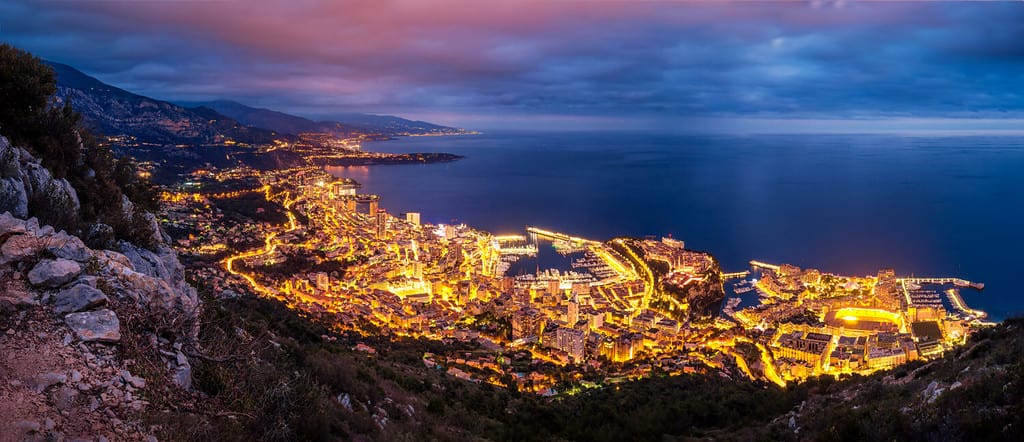
In the evening, Monaco glitters with golden light, hinting at its reputation as a playground for the rich and famous.
©Laurent Fighiera/Shutterstock.com
8. Liechtenstein, Population 39,327
Liechtenstein is a tiny landlocked country on the border between Switzerland and Austria with a population of 39,327. German is its official language, but English and French are also widely spoken. Because of its location in the Alps, Liechtenstein is admired for its gorgeous mountain landscapes. Traditional villages are linked together by a network of trails. The capital city, Vaduz, has a world-class modern and contemporary art collection in the Kunstmuseum Liechtenstein. The Post Museum displays Liechtenstein’s postage stamps. These have often been valued by collectors because they are works of art in themselves. The people of Liechtenstein have built a robust economy. It is based on banking, manufacturing, and tourism, and the standard of living they have created is quite high.
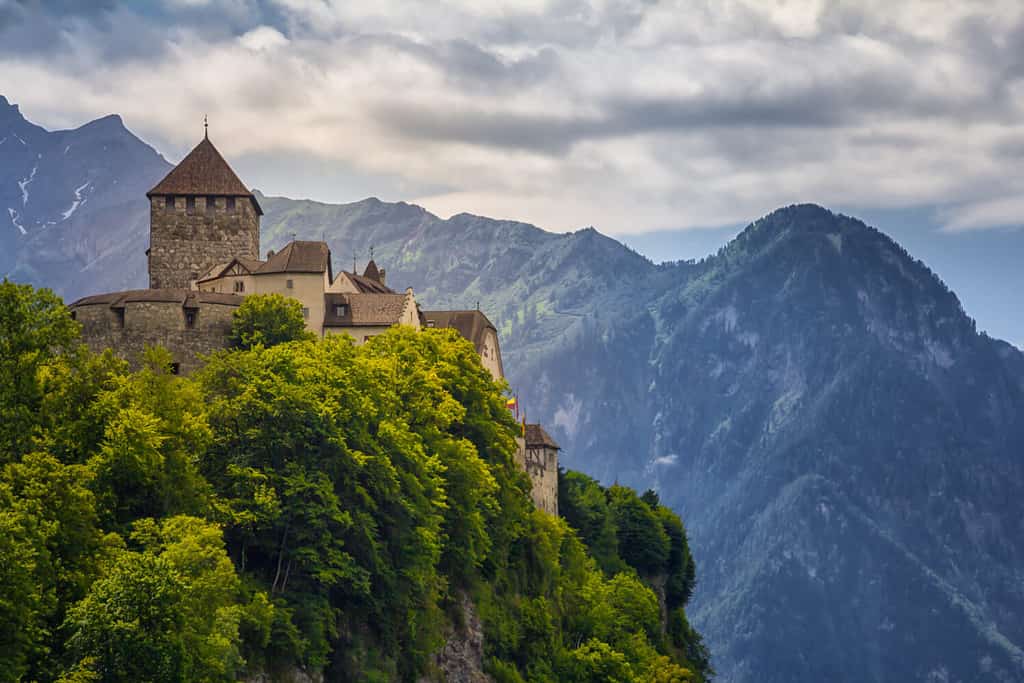
Vaduz Castle has one of the most picturesque views in Liechtenstein.
©stifos/Shutterstock.com
9. Marshall Islands, Population 41,569
The Marshall Islands is a country in the Pacific Ocean consisting of five islands and 29 coral atolls with a population of 41,569. Of all countries in the world, the Marshall Islands has the highest percentage of its territory composed of water, at 97.87%. The islands were first explored by Europeans when the Spanish and Portuguese arrived in the 1520s. Spain took control of the islands but later sold some of them to Germany. They were administered by Japan after World War I and by the United States after World War II. One of the islands, Bikini Atoll, became the notorious Castle Bravo nuclear test site, which remains radioactive today.
Although the Marshall Islands are priceless in their natural beauty and as a marine habitat, they have few exportable natural resources, so the economy depends on foreign aid. Some of the agricultural crops that are produced indigenously are coconuts, tomatoes, melons, taro, breadfruit, fruits, pigs, and chickens. They also gain income from manufacturing copra and craft items, tuna processing, and tourism.
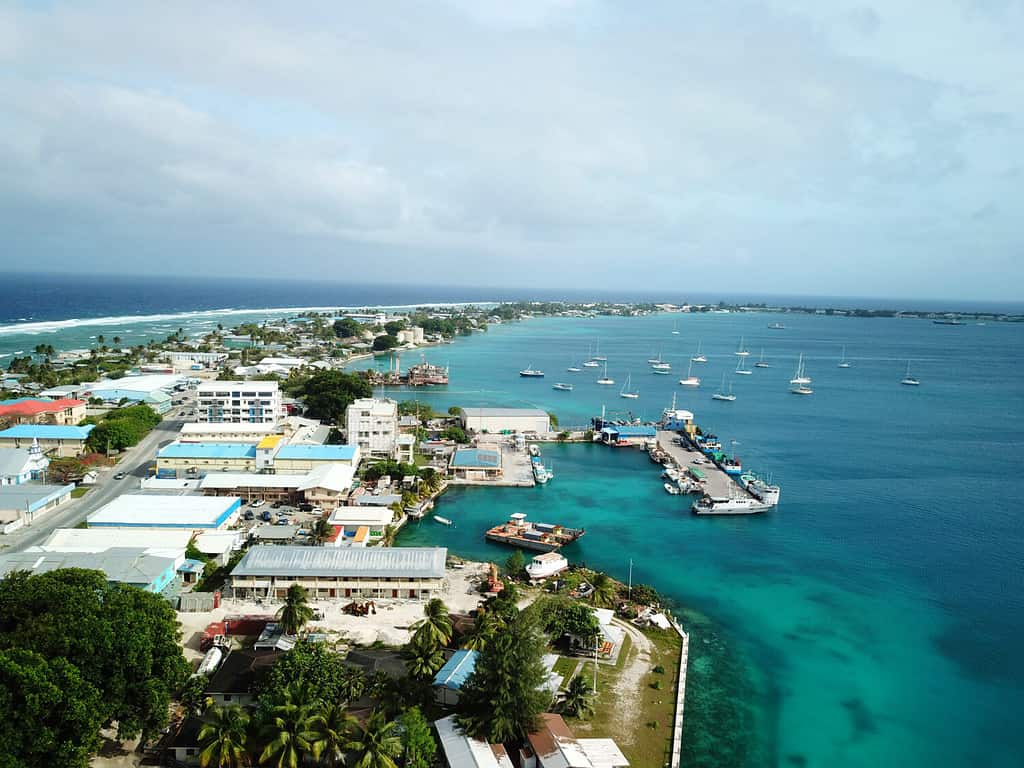
Of all countries in the world, the Marshall Islands has the highest percentage of its territory composed of water, at 97.87%.
©KKKvintage/Shutterstock.com
10. Saint Kitts and Nevis, Population 47,657
Saint Kitts and Nevis is a country of 47,657 people living on two islands (we will let you guess what their names are) with a total land area of 101 square miles. In both population and land area, it’s the smallest country in the Western Hemisphere, and it is the most recent country in the Hemisphere to gain its independence (1983). These were some of the first islands to be colonized by Europeans, so they have been nicknamed “The Mother Colony of the West Indies.”
Saint Kitts and Nevis were formerly British colonies, and now that they are independent, they have still chosen to retain the British monarch as their head of state. Like most Caribbean countries, the culture of Saint Kitts and Nevis shows the influences of Africa, Europe, Latin America, and the Pan-Caribbean. Music, dance, storytelling, and cuisine are all part of the unique cultural fusion on each island. St. Kitts and Nevis have several historic sites, including the Brimstone Hill Fortress National Park, which is a UNESCO World Heritage Site.

St. Kitts and Nevis is a beautiful island country.
©Sean Pavone/Shutterstock.com
11. Dominica, Population 72,737
Dominica is an island country with a land area of only about 290 square miles. It’s located in the Caribbean Sea and 72,737 people live in this island paradise. The original settlers on the island were some of the Arawak people, an important tribe of South America. When the Europeans arrived, they were interested in the Caribbean islands as places to produce expensive tropical products like sugar cane and rum. To keep their profits high, they imported African slaves to the islands. France controlled Dominica in this way for 75 years but lost the island to the British, who kept it in their empire for 200 years. Dominica finally got its independence back in 1978. Although there have been so many tragic chapters in its history, Dominica today has created a cultural fusion of Caribbean, African, French, and British influences that is all its own.
In addition to the really interesting human culture of Dominica, this island especially stands out in the Caribbean for its natural environment. It’s been called the “Nature Island of the Caribbean,” for good reason. Dominica is a volcanic island that still is kind of active. If you visit Boiling Lake National Park, you can see the second-largest hot spring in the world.
Dominica also has a ton of truly spectacular waterfalls and rich rainforests. And inside those forests are some of the rarest plant, animal, and bird species in the world. For example, the nearly extinct Sisserou parrot is found only in Dominica. This parrot has purple feathers that merge into dark green, like it’s dressed for a high-class party. It’s such a rare treasure, Dominica has included a depiction of it on its national flag.

Boiling Lake National Park is a unique destination in Dominica.
©iStock.com/pabst_ell
Which is Your Favorite?
With all you know now about the 10 least populated countries in the world, which would you like to visit, or even emigrate to? Would you pick a tropical island in the Caribbean or Pacific, a luxury European seaside playground, or a micro-nation high in the mountains, with medieval fortresses, quaint villages, and hundreds of years of history and folklore? Or maybe you’d like to be in one of the spiritual and political capitals of the world, a center of power and influence, as well as some of the finest art and architecture produced by Western civilization. Any one of them would be amazing to visit. But if you’re like most people, after a visit, you’d want to get back to your own home, wherever that might be.
Summary Of The 11 Smallest Countries In The World By Population
| Rank | Country | Population |
|---|---|---|
| 1 | Vatican City | 510 |
| 2 | Tuvalu | 11,312 |
| 3 | Nauru | 12,688 |
| 4 | Cook Islands | 15,040 |
| 5 | Palau | 18,055 |
| 6 | San Marino | 33,660 |
| 7 | Monaco | 36,469 |
| 8 | Liechtenstein | 39,327 |
| 9 | Marshall Islands | 41,569 |
| 10 | Saint Kitts and Nevis | 47,657 |
| 11 | Dominica | 72,737 |
Check Out Our Video on These Countries!
Honorable Mentions: More Tiny Countries by Population
Moving up the population ladder, the following 3 countries didn’t make our cut, but still rank below 100,000 in terms of population, making them among the smallest countries in population on Earth.
Andorra
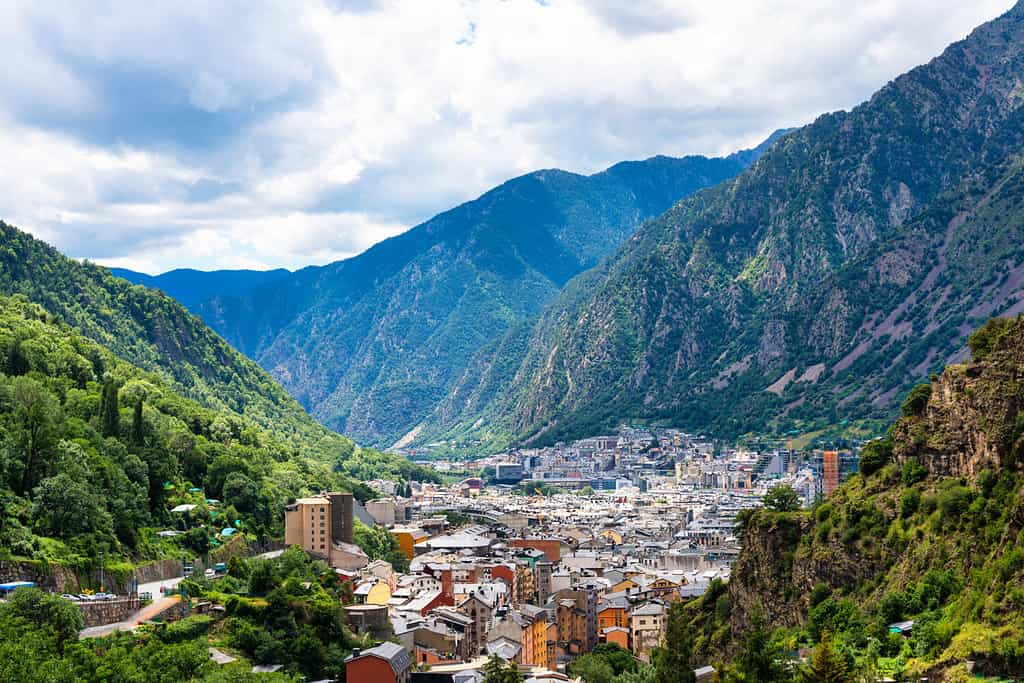
©Armando Oliveira/Shutterstock.com
Nestled between Spain and France in the Pyrenees mountains, the tiny independent principality of Andorra sits. It’s a tourist destination for skiing and draws consumers due to its tax-free status. The population of this country, which covers 181 square miles, is 79,034.
Antigua and Barbuda
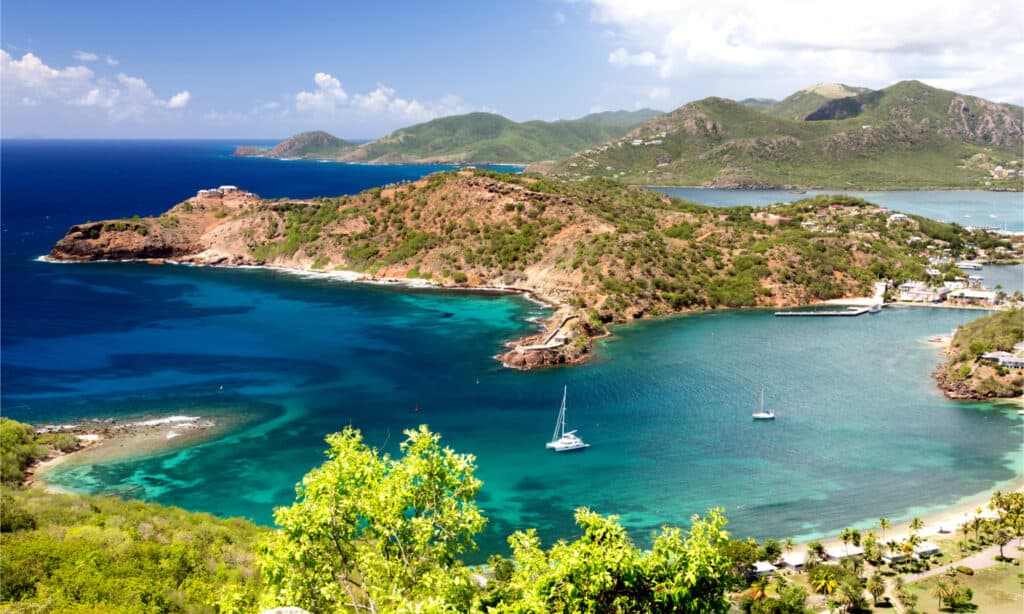
©Alessandro Lai/Shutterstock.com
Antigua and Barbuda is a sovereign nation in the West Indies that achieved independence from Great Britain in 1981. It relies on tourism as its main economic staple, which has made it one of the more prosperous countries in the Caribbean. Currently, its population is 94,298, which may seem large given the island measures only 171 square miles. If you have trouble imagining that size, think of an area 2.5 times the size of the city of Washington D.C. for a clearer picture.
Seychelles

©GagliardiPhotography/Shutterstock.com
The population of the Seychelles Islands as of 2021 was 99,258, putting this 177 square-mile country made up of 115 islands in the Indian Ocean just under 100,000. It’s known as the smallest country in Africa but boasts many wonderful attractions like beaches, nature reserves, and coral reefs. The rare giant Aldabra tortoise is native to these islands.
The photo featured at the top of this post is © freie kreation/Shutterstock.com
Thank you for reading! Have some feedback for us? Contact the AZ Animals editorial team.






